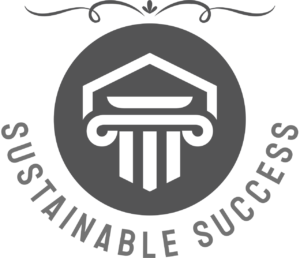The world of investing is evolving, and sustainable investing is on the rise. According to a recent report from Morgan Stanley, more institutional investors are considering positive social or environmental impact when making investment decisions. In fact, 80% of asset owners surveyed said that they actively integrated sustainable investing in 2019, up from 70% in 2017.
So what’s driving this shift? The report cites several factors, including demand from constituents, the potential for attractive financial performance, and evolving regulations that require greater disclosure on environmental, social, and governance (ESG) factors.
“This year’s survey found more asset owners identifying return potential as a key driver for sustainability integration,” says Audrey Choi, Chief Sustainability Officer and CEO of the Institute for Sustainable Investing at Morgan Stanley. “And accordingly, many envision a future where they will limit their allocations to managers with formalized sustainability approaches.”
The survey polled 110 asset owners, including financial institutions, insurers, and pensions in North America, Europe, and Asia Pacific. It found that the majority of respondents (57%) envision a time when they will allocate solely to investment managers with a formal ESG approach. However, many cite barriers to sustainable investing, such as a lack of tools to measure sustainability goals and quality data.
Despite these challenges, the report reveals seven key findings that demonstrate a marked increase in the adoption of sustainable investing among institutional asset owners. Here are some potential titles to convey the key messages:
- Sustainable Investing Goes Mainstream: Key Findings from Morgan Stanley’s Report
- The Rise of Sustainable Investing: 80% of Asset Owners Actively Integrate ESG Factors in Investment Decisions
- Why Sustainable Investing is No Longer Optional: Survey Highlights from Morgan Stanley
- Investing for Good: Asset Owners Seek to Address Social and Environmental Issues
- ESG Integration is the New Norm: Asset Owners Identify Return Potential as Key Driver for Sustainability
- Sustainable Investing Comes of Age: Public Equities and Fixed Income Lead the Way
- Green Bonds and Beyond: Nearly Half of Sustainable Investors Allocate to Fixed Income
The report shows that companies with strong ESG practices may make better long-term investments, and that most institutional investors seek to address environmental themes through thematic or impact investing. The most common approach to sustainable investing is ESG integration, which involves proactively considering ESG criteria alongside financial analysis.
Takeaway
In the ever-evolving landscape of investment, sustainable investing has emerged as a powerful tool for investors seeking to achieve financial returns while also making a positive impact on the world. With the growing awareness of the need for sustainable practices, investors are increasingly looking to align their investments with their values and sustainability goals.
As the trend towards sustainable investing gains momentum, investment managers like Ted Eliopoulos, Vice Chairman at Morgan Stanley Investment Management, are stepping up to play a critical role in supporting clients. They recognize that investors need to be equipped with the necessary tools and data to evaluate sustainability goals and make informed decisions.
Investment managers who embrace sustainable investing can not only help their clients achieve their financial goals but also make a significant positive impact on the environment and society as a whole. By investing in companies that prioritize sustainability, they can incentivize and reward good corporate behavior while simultaneously generating returns for their clients.
Moreover, the benefits of sustainable investing go beyond financial returns. Sustainable investing can help mitigate risks related to climate change, natural resource depletion, and social unrest. By investing in sustainable companies, investors can contribute to a more stable and resilient global economy.
In conclusion, the rise of sustainable investing is a clear indication of the growing awareness of the need for sustainable practices and the importance of investing in a better future. With the support of investment managers, investors can implement tools to assess how investments align with their sustainability goals and make informed decisions that benefit both their financial objectives and the planet.

